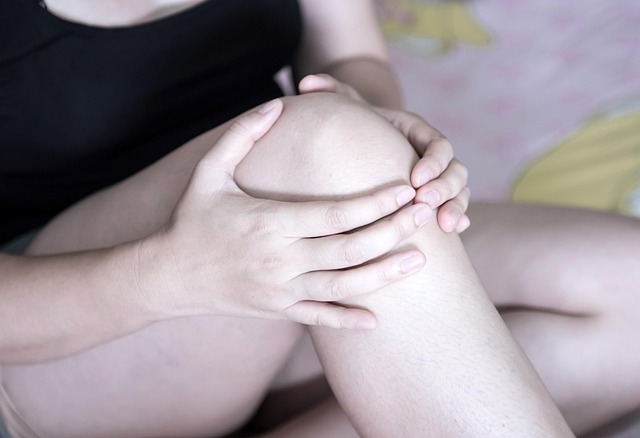Dermatologist wart removal offers safe, effective solutions for various wart types using advanced methods like cryotherapy, topical medications, or surgical excision. Expert diagnosis and specialized techniques minimize scarring and reinfection risks. Home care, including hygiene, medication application, and handwashing, complements professional treatment. Follow-up procedures monitor progress and provide tailored care instructions. Preventing recurrence involves regular cleaning, dry areas, avoiding virus-harboring surfaces, and strengthening the immune system for clear, healthy skin.
Looking for effective dermatologist wart removal methods? Warts can be unsightly and uncomfortable, but with expert care, safe and reliable treatment is achievable. This comprehensive guide delves into the world of dermatologist-led wart removal, exploring various techniques from surgical to topical. Learn about different wart types, causes, and how a specialist can help. Discover home care tips and follow-up procedures for optimal results, along with prevention strategies recommended by dermatology experts.
- Understanding Warts: Types and Causes
- The Role of a Dermatologist in Wart Removal
- Safe Removal Techniques: From Surgical to Topical Treatments
- Effective Home Care and Follow-up Procedures
- Preventing Recurrence: Tips from Dermatology Experts
Understanding Warts: Types and Causes
Warts are small, rough growths that can appear anywhere on the skin, caused by the human papillomavirus (HPV). They vary in size and shape but commonly affect areas like hands, feet, and face. There are several types of warts, including common warts, plantar warts, and genital warts, each with distinct characteristics. Common warts often appear as small, flesh-colored bumps covered in a rough, scaly layer. Plantar warts, found on the soles of feet, can be more painful and sometimes merge into clusters. Genital warts, primarily transmitted sexually, may not be visible but can cause health concerns.
The skin’s exposure to HPV is the primary cause of warts. This virus stimulates the growth of abnormal cells in the top layer of the skin. While some warts may disappear without treatment, others persist and can even spread. Dermatologist wart removal offers effective solutions using advanced techniques like cryotherapy (freezing), topical medications, or surgical excision, depending on the type and location.
The Role of a Dermatologist in Wart Removal
When it comes to effective and safe wart removal, a dermatologist plays a pivotal role. These medical specialists are trained to diagnose and treat various skin conditions, including warts, with precision and expertise. A dermatologist will first assess the type of wart, its size, location, and overall impact on the patient’s skin health. This evaluation is crucial as different warts require distinct treatment approaches.
Their knowledge extends to a range of removal techniques, from topical treatments and cryotherapy to more invasive procedures. By employing specialized tools and medications, dermatologists ensure that warts are removed accurately, minimizing the risk of scarring or reinfection. Regular check-ups are also part of the process to monitor progress and address any concerns promptly, making dermatologist wart removal a reliable and effective solution.
Safe Removal Techniques: From Surgical to Topical Treatments
When it comes to dermatologist wart removal, various safe techniques are available, catering to different preferences and wart types. Surgical excision remains a popular method, where a doctor physically removes the wart using a scalpel or laser. This approach is effective for larger warts, ensuring complete elimination. However, it may leave scars and requires local anaesthesia.
Alternative topical treatments offer a less invasive option. Dermatologists often prescribe medications containing salicylic acid or cryosurgery (freezing) for smaller, more superficial warts. These methods are generally suitable for common skin types and can be performed in the comfort of your home under professional guidance. Topical treatments provide a safer, non-surgical alternative for those seeking dermatologist wart removal.
Effective Home Care and Follow-up Procedures
While a dermatologist offers professional wart removal, effective home care plays a crucial role in complementing the treatment process. After the initial procedure, it’s essential to maintain good hygiene and avoid touching or picking at the treated area to prevent reinfection. Keeping the skin clean and dry, and applying any prescribed medications or bandages as recommended by the dermatologist, ensures optimal healing. Regular handwashing with antibacterial soap and warm water is vital to minimize the spread of warts to other parts of the body or to others.
Follow-up procedures are equally important for monitoring the treatment’s progress. During scheduled appointments, the dermatologist will assess the treated area, ensure there are no adverse reactions, and provide additional care instructions if necessary. This ongoing communication facilitates a safe and effective wart removal process tailored to individual needs.
Preventing Recurrence: Tips from Dermatology Experts
After successful dermatologist wart removal, preventing recurrence is key to maintaining clear, healthy skin. Experts recommend a multi-pronged approach that combines patient care and at-home practices. Regularly cleaning treated areas with mild antiseptics and keeping them dry helps to avoid reinfection. Additionally, avoiding contact with surfaces known to harbor viruses, like public pool decks or gym equipment, can significantly reduce the risk of warts returning.
Dermatology professionals also stress the importance of strengthening your immune system. This includes adequate sleep, staying hydrated, and maintaining a balanced diet rich in vitamins and minerals. Over-the-counter medications and bandages prescribed by your dermatologist can also offer extra protection against recurring warts. Remember, consistent vigilance and proactive measures are essential to keep those unsightly warts at bay.
When it comes to effective and safe dermatologist wart removal, professional guidance is invaluable. From understanding different wart types and their causes to exploring various treatment techniques, dermatologists offer tailored solutions for swift relief. By combining surgical precision with topical treatments, along with providing home care tips and follow-up procedures, experts ensure optimal results while minimising potential risks. Additionally, preventing recurrence becomes manageable through expert advice, ensuring a smooth journey towards wart-free skin. Trusting a dermatologist for wart removal is a step towards achieving clear, healthy skin.
